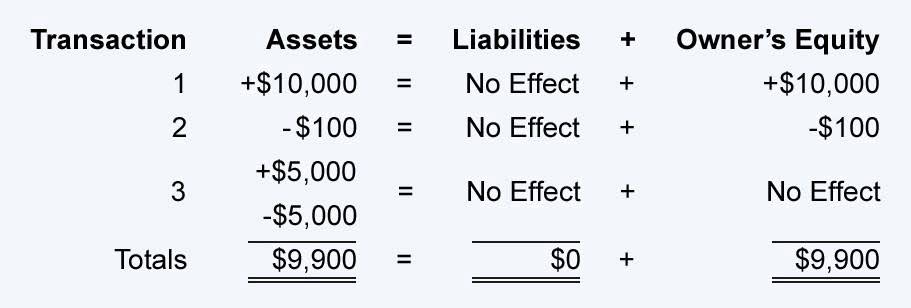
At its core, the equity multiplier is a financial leverage ratio that measures the proportion of a company’s assets that are financed by its shareholders’ equity. It reflects how much of a company’s assets are financed by equity versus debt. The higher the equity multiplier, the more debt a company has used to finance its assets, indicating higher financial leverage.
Equity Multiplier Formula and Examples
- A company with a higher equity multiplier is more leveraged than a company with a lower equity multiplier.
- Essentially, it showcases the ownership capital available within the organization.
- Mastering the calculation and interpretation of the equity multiplier can provide valuable insights for investors looking to make sound investment decisions.
- In conclusion, the equity multiplier within the DuPont Analysis is a critical indicator of not just a company’s leverage, but also its financial stability.
- The equity multiplier compares the company’s total assets with the firm’s shareholders’ equity.
- In practical terms, these two ratios can impact a company’s borrowing costs.
Delving into the world of finance, understanding the equity multiplier can be a game-changer. In this guide, we’ll break down the intricacies of how to calculate equity multiplier and shed light on its importance in evaluating a company’s financial structure. From basic concepts to practical applications, let’s embark on a journey to unravel the secrets behind this key financial metric. The equity multiplier ratio offers investors a glimpse of a company’s capital structure, which can help them make investment decisions.
- This means that for every dollar of equity, the company has $2.50 in assets, implying that $1.50 is financed by debt.
- This is because there can be times when a high equity multiplier reflects that the strategy of the company that makes it more profitable allows it to purchase or acquire assets at a lower cost.
- Total equity is on a company’s balance sheet or in its shareholder’s equity section.
- This may seem to be positive, but its downside is the company will have low growth prospects and therefore low financial leverage.
- The asset turnover ratio is another key financial ratio that provides insight into a company’s efficiency in using its assets to generate revenue.
- By providing a clear picture of the balance between debt and equity in a company’s capital structure, the equity multiplier assists in evaluating the risk and potential return on investment.
- Total assets refer to a company’s total liabilities plus its stockholder equity.
Company
Higher equity multipliers typically signify that the company is utilizing a high percentage of debt in its capital structure to finance working capital needs and asset purchases. This makes Tom’s company very conservative as far as creditors are concerned. Both the above concepts refer to financial ratios that are widely used in the financial market to assess the capital structure in the form of proportion of debt and equity. However, both of them focus of different aspects and have different conclusions. The equity multiplier is important for investors because it offers a glimpse of a company’s Keep Records for Small Business capital structure and how much debt the company has. This can help investors decide if they want to invest in the company and what level of risk, they are willing to take on.

What is equity multiplier ratio?
Learn why equity multiplier benchmarks can differ across various sectors. On the other hand, a low equity multiplier indicates the equity multiplier company is not keen on taking on debt. However, this could also make the company less likely to get a loan if needed.
- The equity multiplier is a relevant factor in the DuPont analysis which is a method of financial analysis that was devised by the chemical company for its internal financial review.
- Stockholder equity represents the amount of money invested in the business by the owners and any retained earnings.
- An equity multiplier of 5.0x would indicate that the value of its assets is five times larger than its equity.
- Low equity multiplier, on the other hand, indicates that a company is less leveraged and has more equity financing.
- If a company has a high equity multiplier, it borrows to finance purchases, so its debt burden is higher.
- Consider Apple’s (AAPL) balance sheet at the end of the 2021 fiscal year.
- Depending on the industry standard, businesses can determine whether this ratio is higher or lower.
Let us discuss the two components to understand their effects on business finances. Our goal is to deliver the most understandable and comprehensive explanations of climate and finance topics. Go a level deeper with us and investigate the potential impacts of climate change on investments like your retirement account. On the face of it, Samsung may appear less risky than Apple because of its lower multiplier. With interest rates at record lows since the 2008 financial crisis, Apple has taken the opportunity to access cheap funding on several occasions over the last few years.
A lower ratio suggests more assets are self-financed, which is usually more attractive to investors and creditors. The equity multiplier formula consists of total assets and total stockholder equity. Total assets refer to a company’s total liabilities plus its stockholder equity. Stockholder equity represents the amount of money invested in the business by the owners and any retained earnings.
Capital Rationing: How Companies Manage Limited Resources
That means the 1/8th (i.e., 12.5%) of total assets are financed by equity, and 7/8th (i.e., 87.5%) are by debt. As an investor, if you look at a company and its multiplier, you would only be able to tell whether the company has been using high or low financial leverage ratios. In a nutshell, management’s ability to manage a company’s equity multiplier and thereby control the financial risk contributes positively to corporate sustainability.
Indicates financial strength
Total assets are on a company’s balance sheet, while total equity is on a company’s balance sheet or in its shareholder’s equity section. The formula for calculating the equity multiplier consists of dividing a company’s total asset balance by its total shareholders’ equity. That’s why you need to go to the advanced calculation and look at the financial leverage ratios in detail.

Examples of Equity Multiplier Ratio

Apple’s high equity multiplier ratio of 5.57x indicates that the company relies heavily on debt retained earnings financing to fund its assets. This could expose Apple to higher financial risk if it faces difficulties in generating sufficient cash flows to service its debt obligations. However, Apple’s strong market position and brand value may allow it to manage its debt effectively. The equity multiplier is a critical indicator of a company’s financial structure. It helps stakeholders understand how a company is financing its operations and growth.
